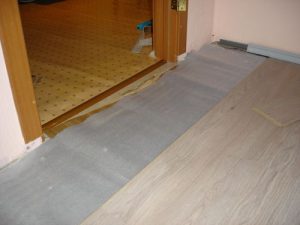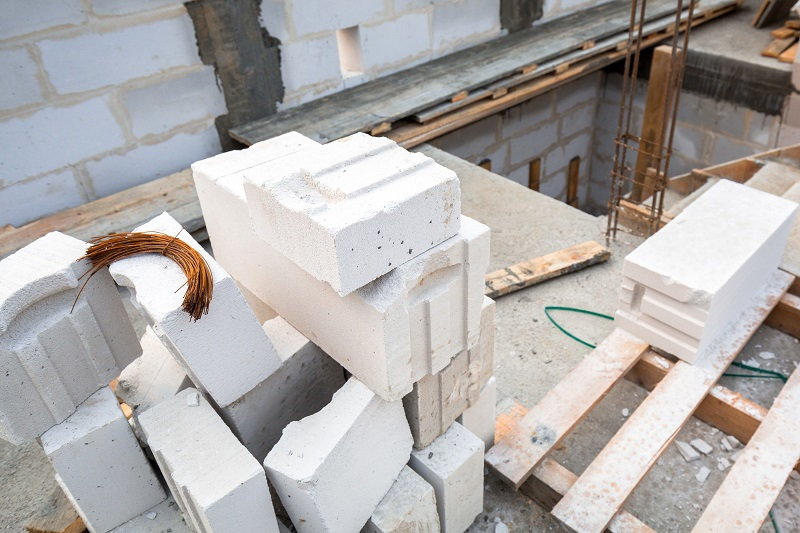Laying laminate on uneven floors
 Laminate is rapidly gaining popularity among the finishing materials. Its relatively low cost is not an indication that this material will not last long. The main condition – laying laminate boards on a perfectly flat floor surface. Of course, you can lay it on the old floor, which has irregularities. But in the process of repair will have to face various nuances that can significantly complicate the work. In short, laying laminate on an uneven floor is a very important matter.
Laminate is rapidly gaining popularity among the finishing materials. Its relatively low cost is not an indication that this material will not last long. The main condition – laying laminate boards on a perfectly flat floor surface. Of course, you can lay it on the old floor, which has irregularities. But in the process of repair will have to face various nuances that can significantly complicate the work. In short, laying laminate on an uneven floor is a very important matter.
In the course of repair, we often strive to get rid of old finishing materials, changing them to more modern ones. Almost always, when repairing the floor, one has to deal with the main problem – surface irregularities. This may be chipped or nodded concrete, uneven boards and just drops in level. Obviously, it is impossible to lay laminate material on such a floor, otherwise the consequences can be quite sad. The reasons for this are sufficient. Above voids, the material under load will sag, disperse at the joints, the floor can quickly lose its integrity. The worst option is to break the locks or a crack appears in the panel.
Note that this method is the simplest and has the ability to completely solve existing problematic issues with foundation. There are several types of substrate materials:
cork bitumen,
natural cork,
polyethylene,
polyurethane.
Their application can be clarified by the attached instructions, which can tell about all the performance characteristics of each material. Any substrate used by you is laid on the base of an uneven floor. The laminate board is mounted from above freely, without any fastenings to the substrate.
Note! You can use the leveling substrate on the floor, which has minor irregularities.
At significant differences or large defects, it is necessary to perform preparatory work aimed at leveling the base.
Preparation of the concrete base
A concrete floor is the most common option for laying laminate flooring on it. Consider the activities that need to be done on the concrete floor:
Preparation for repair.
Inspection of the surface of the concrete base.
Surface alignment.
Preparatory activities include the removal of dirt, dust and the old coating from the concrete surface. Next, you should inspect the base for cracks, cavities, flows, check possible differences in the building level. All these unpleasant moments can have a negative impact on the quality of the laminate coating. Now you can begin work on the alignment. Best suited for this self-leveling mixture. Works are performed in a specific sequence:
In a suitable container we dilute a special solution for leveling. In this work, all recommendations of the accompanying instructions from the manufacturer should be strictly followed.
Pour the solution onto the floor. It should start from its highest point.
Evenly distribute the mixture over the entire surface area.
Remove excess air by rolling the solution with a special studded roller made of rubber.
After the mixture dries, we perform waterproofing.
After all these activities, you can lay out laminate flooring without any fear.
Wooden floor preparation
When preparing a wooden floor should be about the same list of works as for the concrete surface. The primary inspection determines the presence of cracks, cracks, irregularities, creaking boards. Loose creaking areas fasten to the logs, using screws. If their fixing does not give a positive result – such boards should be replaced completely. The cracks and cracks are filled with putty material. Large overshoots of the boards can be eliminated with the help of scuffing. They can be performed with a plane, but it is better to use a cycler. Before this work, it is necessary to thoroughly deepen into the wooden surface all the heads of nails and self-tapping screws.
Alignment is allowed using plywood sheets, although this is not the best way. It is best to make a cement screed on a wooden surface. It will give good guarantees of the evenness of your surface on which you can lay laminate.
Laminate boards can be laid without any problems on any previously prepared floor surface, but remember that the maximum allowable value of the differential should not exceed two millimeters per one meter of coating. Such drops are easily hidden when using a substrate, the thickness of which, according to all recommendations, should not exceed four millimeters. It is simultaneously capable of performing several functions – depreciation, sound insulation, waterproofing.



